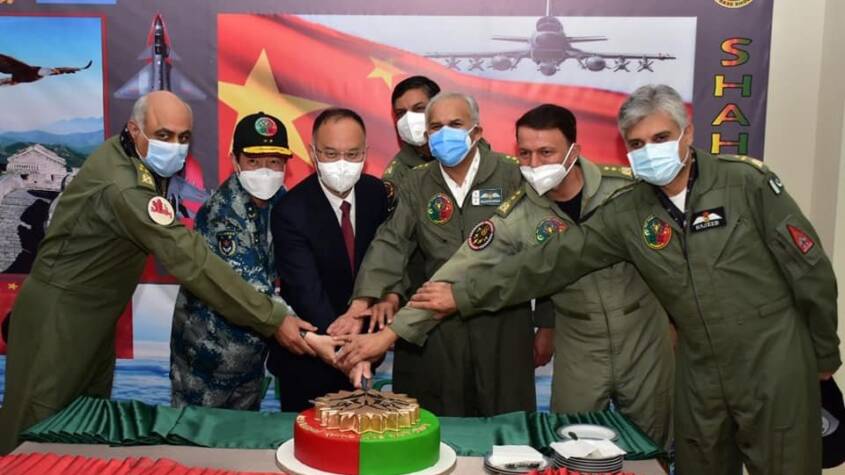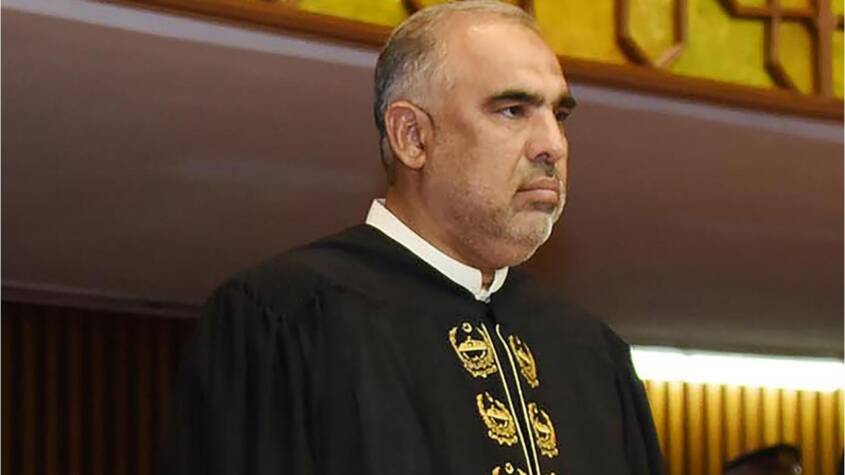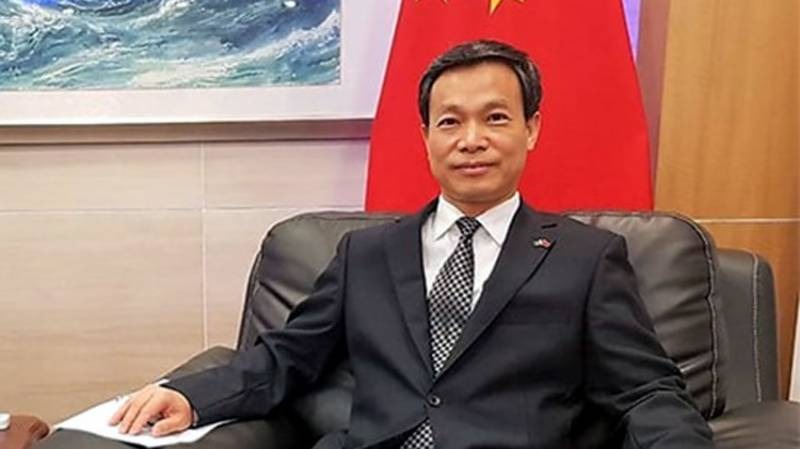Armed forces delivered their promise to the nation, DG ISPR stated while briefing about Pakistan’s operation against Indian aggression.
Director General of Inter-Services Public Relations (ISPR), Lieutenant General Ahmed Sharif Chaudhry, stated that Pakistan’s Armed Forces had honored their commitment to retaliate against India’s blatant and cowardly military aggression.
He made these remarks during a press conference in Rawalpindi, joined by Deputy Chief of Air Staff (Operations) Air Vice Marshal Aurangzeb Ahmed, and Deputy Chief of Naval Staff (Operations) Vice Admiral Raja Rab Nawaz.
General Chaudhry outlined the objectives and outcome of “Operation Bunyan-un-Marsoos,” launched in retaliation for the Indian military attack on the night of May 6–7, which killed innocent civilians, including women, children, and the elderly.
He detailed that 26 Indian military installations and terror-linked facilities used to target Pakistan were struck during the operation, including locations in Indian Illegally Occupied Jammu and Kashmir and mainland India.
The operation showcased a coordinated response by Pakistan’s three armed services, enabled by real-time situational awareness and advanced multi-domain warfare capabilities across air, land, sea, and cyberspace, allowing for precise and rapid engagement of enemy targets.
Pakistan utilized Fatah-1 and Fatah-2 long-range missiles, precision munitions by the Air Force, advanced loitering munitions, and accurate long-range artillery to carry out the strikes.
Among the targeted sites were key airbases and military installations at Suratgarh, Sirsa, Nalia, Adampur, Bhatinda, Barnala, Halwara, Awantipura, Srinagar, Jammu, Udhampur, Mamoon, Ambala, and Pathankot. Significant damage was inflicted on BrahMos missile storage sites at Beas and Nagrota, which had previously launched attacks on Pakistan. The S-400 air defense system at Adampur was also hit by the Pakistan Air Force.
Other targets included military logistics hubs and support sites like the field supply depot in Uri and a radar station in Poonch, which facilitated Indian aggression.
Command centers such as the 10 and 80 Brigades at KG Top and Nowshera, involved in orchestrating attacks on civilians, were also destroyed.
Facilities housing and training proxy forces for cross-border terrorism were identified and eliminated, including intelligence support units and their field elements in Rajauri and Nowshera.
General Chaudhry said Pakistani forces also heavily damaged Indian military positions across the Line of Control that were responsible for unprovoked attacks on civilians in Azad Jammu and Kashmir, prompting the enemy to raise a white flag and call for restraint. He noted India had deployed drones to intimidate Pakistani civilians.
As part of the operation, dozens of Pakistani drones flew over key Indian cities and sensitive government sites, including New Delhi, from Occupied Kashmir to Gujarat.
Eighty-four Indian drones were shot down. General Chaudhry reiterated Pakistan’s promise that any hostile object sent across the border would not return—and they stood by that.
He confirmed that Pakistan also launched a successful cyber offensive, temporarily disabling critical Indian infrastructure supporting their military efforts.
General Chaudhry highlighted that Pakistan holds a broad range of cutting-edge military technologies, many of which were deliberately withheld during this engagement but are available for future use.
In contrast to India’s continuous provocations, Pakistan’s military response was precise, proportionate, and deliberately restrained—targeting only the sources of aggression while avoiding civilian casualties.
He described “Operation Bunyan-un-Marsoos” as a model example of national unity and collective power, backed by unwavering public support.
He affirmed that Pakistan had pledged to deliver justice after India’s inhumane assault and was thankful to Almighty Allah for enabling them to carry out effective military actions.
General Chaudhry expressed deep condolences to the families of the martyrs and wished a speedy recovery for those injured.
He extended sincere appreciation to all ranks of the armed forces—soldiers, airmen, and sailors—whose professionalism and bravery led to success on the battlefield.
He also thanked the Pakistani nation for their strong moral and emotional support during the crisis.
General Chaudhry praised the role of the youth who actively participated as frontline digital and cyber defenders of the country.
He also appreciated the Pakistani media for its responsible reporting and for acting as a steel wall against India’s media war narrative.
He expressed gratitude to the political leadership of all parties for their united stance in support of the Armed Forces in defending the nation.
He especially acknowledged Prime Minister Shehbaz Sharif and his cabinet for taking bold, decisive actions during this critical time.
In response to a question about the ceasefire, General Chaudhry clarified that Pakistan did not request one. It was India that approached Pakistan after the initial attack, and Pakistan responded only after executing its own military reply on May 10, following appeals from international mediators.
He further clarified that Pakistan’s Armed Forces have strictly adhered to the ceasefire along the Line of Control, acting with professionalism and discipline in accordance with government orders.
General Chaudhry also stated that the recent conflict has highlighted Kashmir as a dangerous flashpoint requiring resolution.
Regarding the Indus Waters Treaty, he said Pakistan’s stance remains firm and clear as per government policy.
He emphasized that Pakistan will not be intimidated by the military strength of its adversaries and reiterated their promise of a timely and decisive response to any aggression.
Deputy Chief of Air Staff (Operations), Air Vice Marshal Aurangzeb Ahmed, added that the Pakistan Air Force neutralized key enemy threats with an effective response.
He described Pakistan’s air defense system as a multi-layered shield against aerial threats such as aircraft, drones, and various types of missiles.
He noted that Pakistan continues to strengthen its air defense in light of regional threats, particularly from India.
Aurangzeb emphasized that the air defense network is capable of detecting both fast and slow aerial threats—including stealthy jets and loitering drones—ensuring the country’s airspace remains secure.
He said the Pakistan Air Force is equipped with modern technology that allows real-time monitoring of enemy missile launches and long-range vehicles during all flight stages.
This technological edge enables detection of even stealth aircraft with low radar signatures, ensuring Pakistan remains ever-vigilant.
Regarding naval operations, Vice Admiral Raja Rab Nawaz stated that the Pakistan Navy rapidly mobilized after India’s false flag attack in Occupied Kashmir and maintained full operational readiness.
He said the Navy swiftly deployed its fleet within hours, maintaining high alert across all maritime domains.
He assured that the Navy is fully capable of countering any threats at sea and maintains strong maritime awareness, including tracking Indian naval movements like the INS Vikrant, which withdrew to Mumbai after approaching Karachi.
He said that in coordination with the Air Force, the Navy was ready to respond if any hostile action had been taken by the Indian warship, including a missile strike.
Vice Admiral Nawaz added that the Navy’s Coastal Command was deployed to secure sensitive creek areas, ensuring all ports and harbors remained protected and fully operational for trade.
Related Posts
8 Pakistanis martyred, 35 injured in cowardly Indian attacks: DG ISPR

















